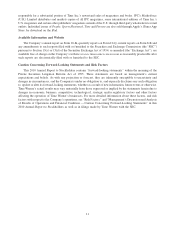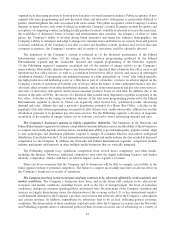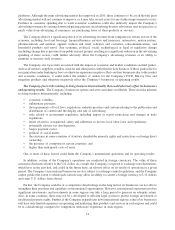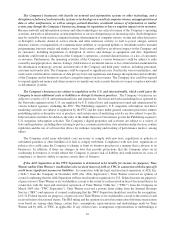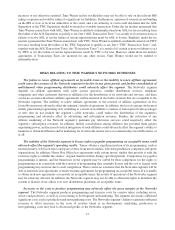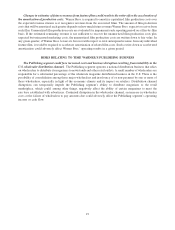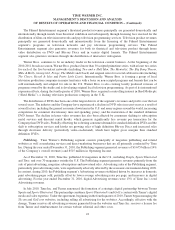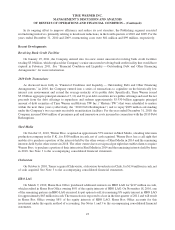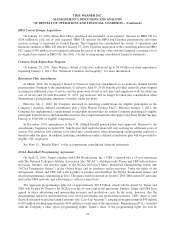Time Magazine 2010 Annual Report Download - page 31
Download and view the complete annual report
Please find page 31 of the 2010 Time Magazine annual report below. You can navigate through the pages in the report by either clicking on the pages listed below, or by using the keyword search tool below to find specific information within the annual report.Changes in estimates of future revenues from feature films could result in the write-off or the acceleration of
the amortization of production costs. Warner Bros. is required to amortize capitalized film production costs over
the expected revenue streams as it recognizes revenues from the associated films. The amount of film production
costs that will be amortized each quarter depends on how much future revenue Warner Bros. expects to receive from
each film. Unamortized film production costs are evaluated for impairment each reporting period on a film-by-film
basis. If the estimated remaining revenue is not sufficient to recover the unamortized film production costs plus
expected but unincurred marketing costs, the unamortized film production costs are written down to fair value. In
any given quarter, if Warner Bros. lowers its forecast with respect to total anticipated revenue from any individual
feature film, it would be required to accelerate amortization of related film costs. Such a write-down or accelerated
amortization could adversely affect Warner Bros.’ operating results in a given period.
RISKS RELATING TO TIME WARNER’S PUBLISHING BUSINESS
The Publishing segment could face increased costs and business disruption resulting from instability in the
U.S. wholesaler distribution channel. The Publishing segment operates a national distribution business that relies
on wholesalers to distribute its magazines to newsstands and other retail outlets. A small number of wholesalers are
responsible for a substantial percentage of the wholesale magazine distribution business in the U.S. There is the
possibility of consolidation among these major wholesalers and insolvency of or non-payment by one or more of
these wholesalers, especially in light of the economic climate and its impact on retailers. Distribution channel
disruptions can temporarily impede the Publishing segment’s ability to distribute magazines to the retail
marketplace, which could, among other things, negatively affect the ability of certain magazines to meet the
rate base established with advertisers. Continued disruption in the wholesaler channel, an increase in wholesaler
costs or the failure of wholesalers to pay amounts due could adversely affect the Publishing segment’s operating
income or cash flow.
19




